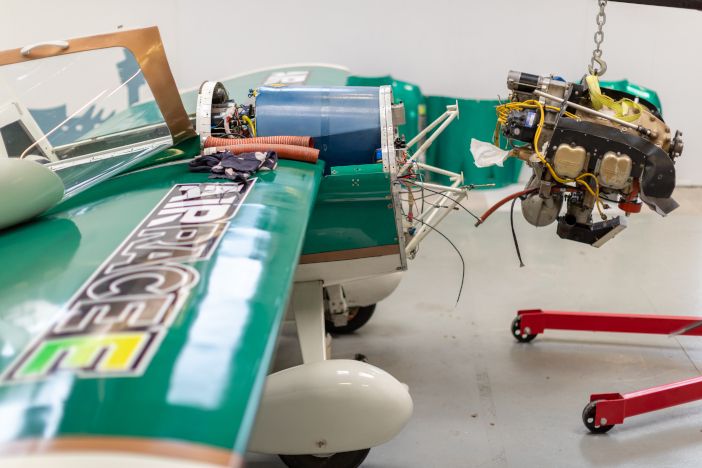By Professor Chris Gerada
The electrification of aircraft, or more electric aircraft, has been an ongoing R&D topic for the past few decades with a focus on the electrification of non-propulsive systems of existing and near-future aircraft platforms.
These include large passenger aircraft, regional and business aircraft and rotorcraft such as electrification of actuation systems, cabin pressurization and air conditioning, wing de-icing, electric ground taxiing and electric power generation.
Considerable effort is being made to develop these systems so they are reliable and the aircraft lightweight and during the last few years the amount of work into electrification of propulsion has increased.
This has been informed by: advancements in electrification technologies in other transport platforms such as automotive; a realization by stakeholders that electrification of propulsion is a fundamental ingredient in meeting future emission targets, and a demand for alternative mobility modes for future cities and economy.
Technical challenges
Electrification of propulsion will impact aircraft platforms in the existing market as well new platforms.
The electrification of existing platforms is mainly driven by the need for reduced emissions. The technical challenges in doing this range from evolutionary to disruptive depending on the level of powers and voltages needed.
A regional aircraft might be looking at powers in the megawatt (MW) range and a large aircraft in the tens of MWs. Achieving these requires overcoming significant technical challenges.
Many experts are currently looking into ways of improving current achievable power densities, efficiency and reliability properties.
The other benefit of the electrification of propulsion is greater design freedom brought about by the ability to distribute propulsors across the aircraft. As a result of this new development we are seeing new aircraft design concepts for personal mobility and cargo, such as autonomous electric vertical take-off and landing (eVTOL), to compete with taxis and other urban ground transportation methods.
Small platforms, such as those described above, have the advantage that the technology is relatively mature compared to high power electrical systems because it is translatable from automotive and existing aircraft electrification technologies. This has seen a myriad of technologically advanced concepts.
Barriers to electrification
Whilst there is much improvement to be made from the technological aspect, the key barriers to successful deployment are regulations, airspace management, public perception and successful business models to make them viable.
However, aircraft electrification, together with autonomy, has the potential to improve existing supply chains and create new aerospace market segments and supply chains. This is already evident from the significant R&D investment and activities from the more traditional aircraft industry, from other transportation sectors, especially automotive, and from the range of other mobility-service providers and start-ups.
From a technical development perspective there are significant challenges to develop new technologies, new manufacturing processes, establish new supply chains and new standards. These go hand-in-hand with challenges for testing and certification – there is a lack of infrastructure and facilities to test and demonstrate key electrical propulsion components, sub-systems and their integration into larger systems especially at high power and voltage levels.
Test facilities and equipment
A number of focused and often proprietary facilities have and are being developed. An example is the test bench developed by Safran for eVTOL.
Airbus’ E-Aircraft Systems Test House will offer the capability to test MW-level systems and Collins Aerospace Systems’ ‘The Grid’ will also aim for MW-level power test systems, with Project 804 (hybridisation of a regional turboprop) being one of its first platforms to test.
With eVTOLs, there are technical challenges but compared to larger aircraft platforms, the main bottlenecks for widespread adoption are regulatory, public perception and business challenges for this market segment.
Success and predicted volumes are heavily reliant on investment by governments/city authorities in supporting regulatory frameworks as well as ground infrastructure and compatible mobility models.
These are, however, a clear disruptive technology to current helicopter developers and their supply chains. Many parallels can be drawn to the automotive sector. It is likely that the cargo segment of the market will be a first adopter which will also help support perception with respect to the safety of these platforms.
For larger propulsive powers the technical challenges are more significant and require investment across the whole echosystem. They require electrical propulsion drive components which operate at significantly higher power densities and efficiencies compared to existing technologies and able to operate within high voltage distribution networks.
New concepts for thermal management and aircraft integration are also required. Apart from the technological challenges the skills pipeline is critical especially in an environment where there is significant co-current demands on talent form the automotive industry.
 Professor Chris Gerada is professor of electrical machines and associate pro-vice-chancellor (industrial strategy, business engagement and impact) at the University of Nottingham.
Professor Chris Gerada is professor of electrical machines and associate pro-vice-chancellor (industrial strategy, business engagement and impact) at the University of Nottingham.





